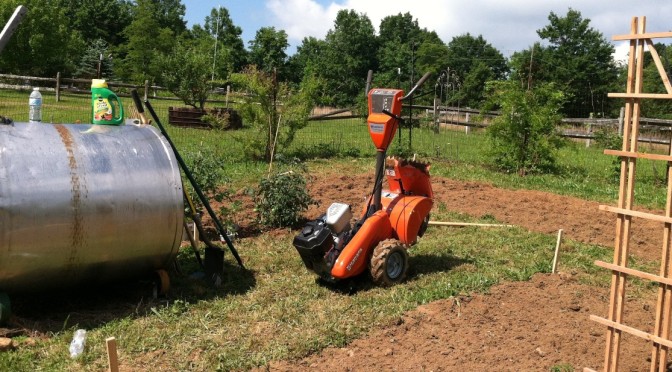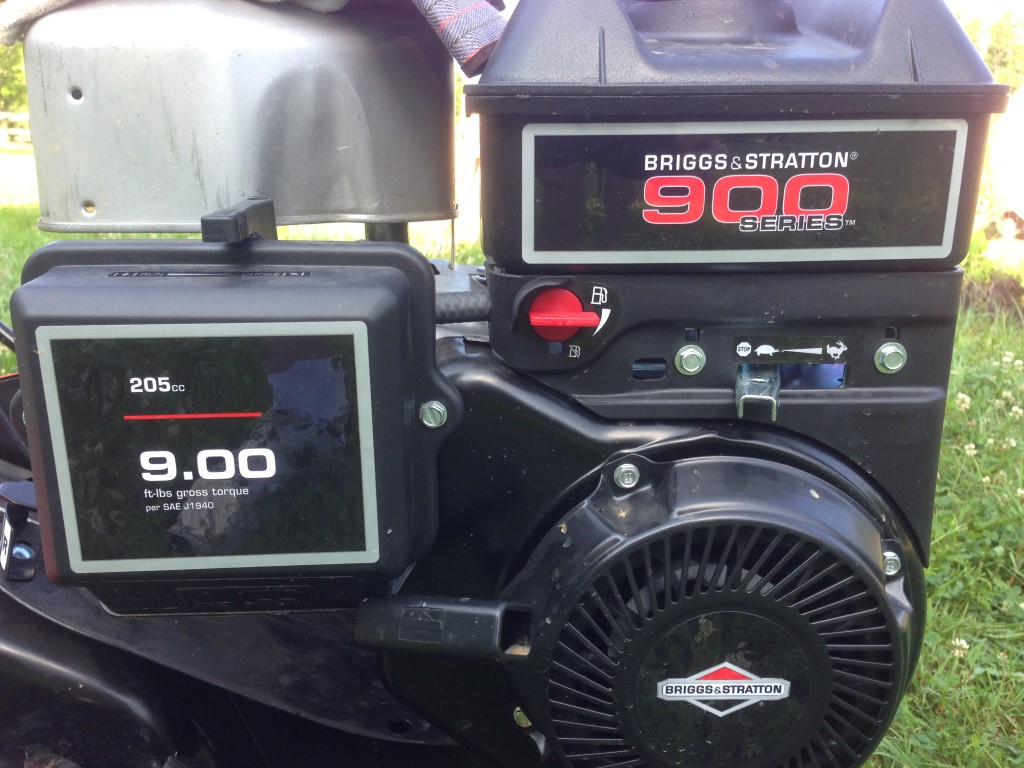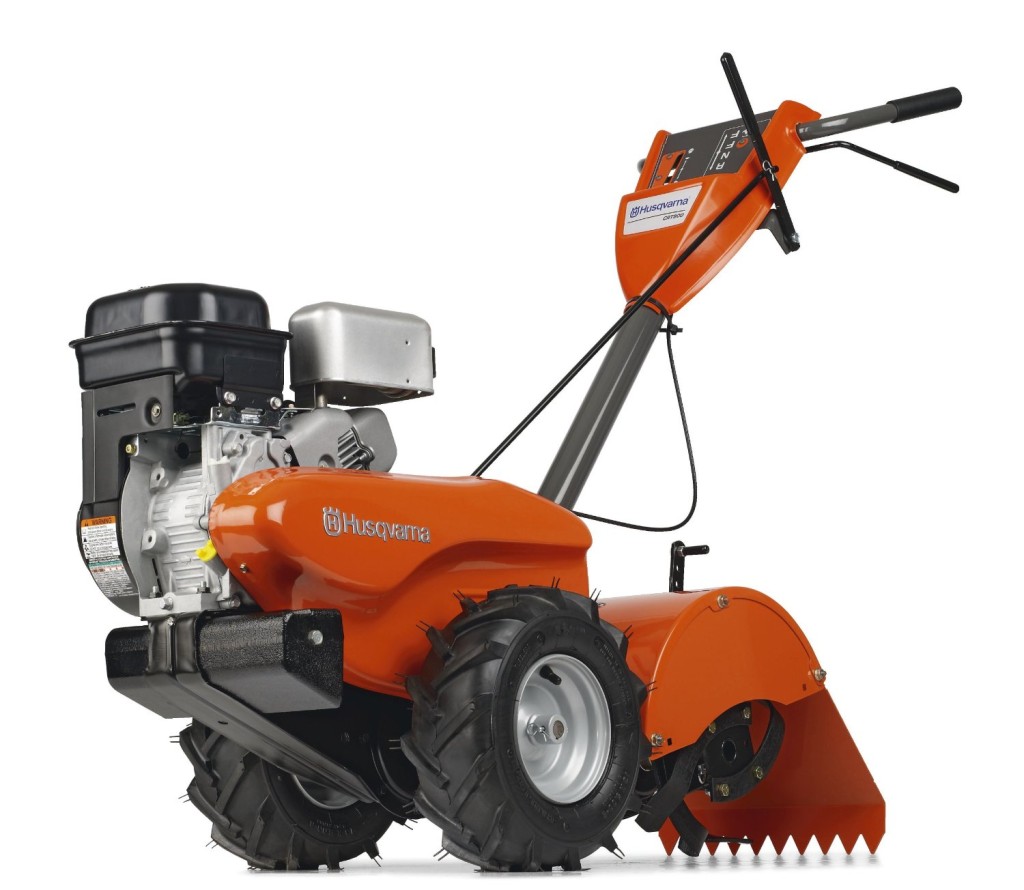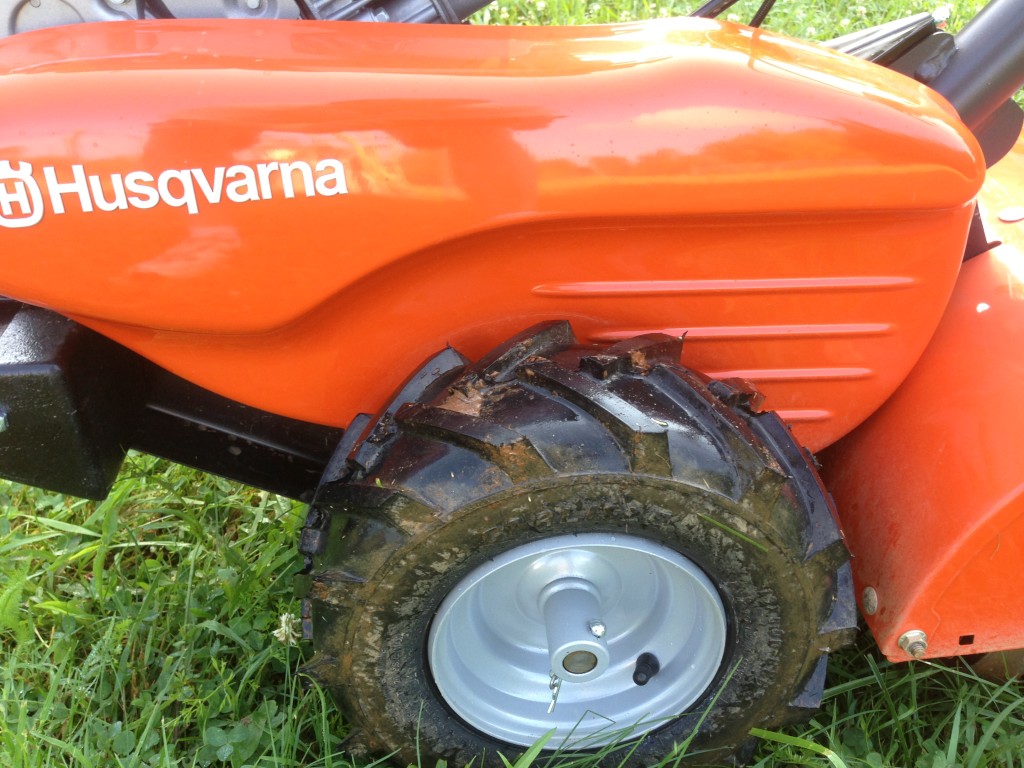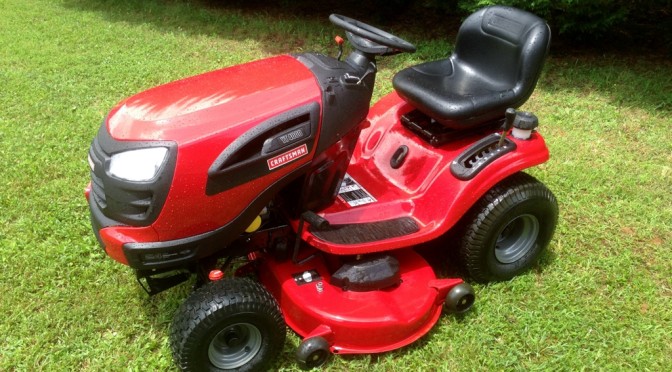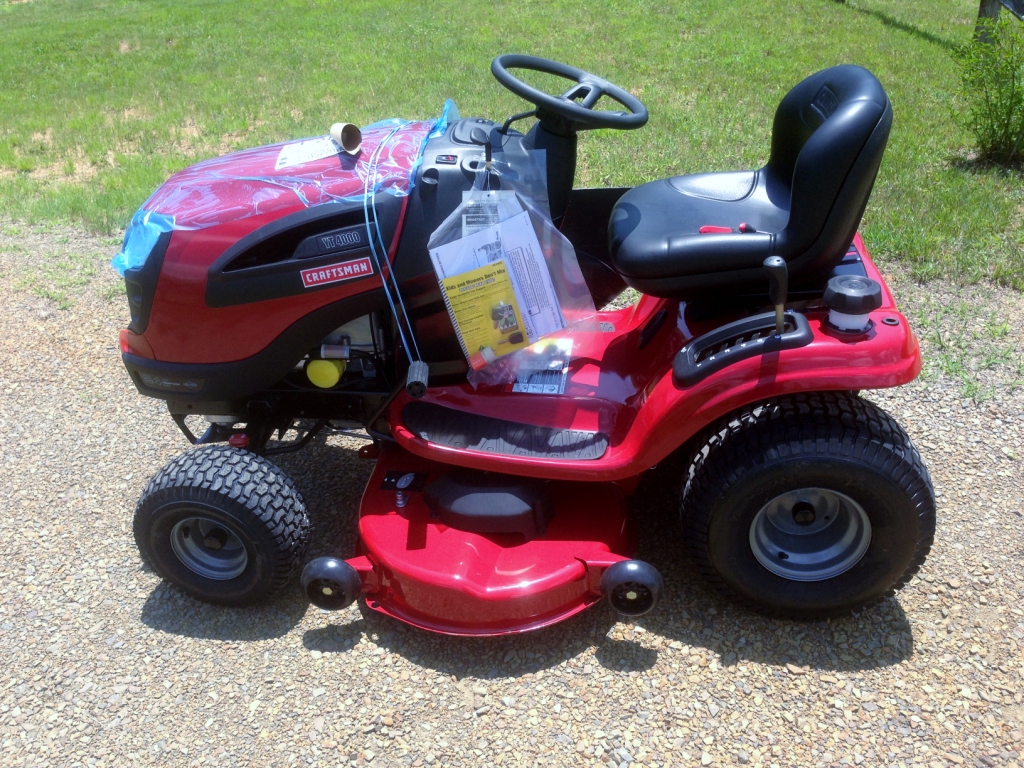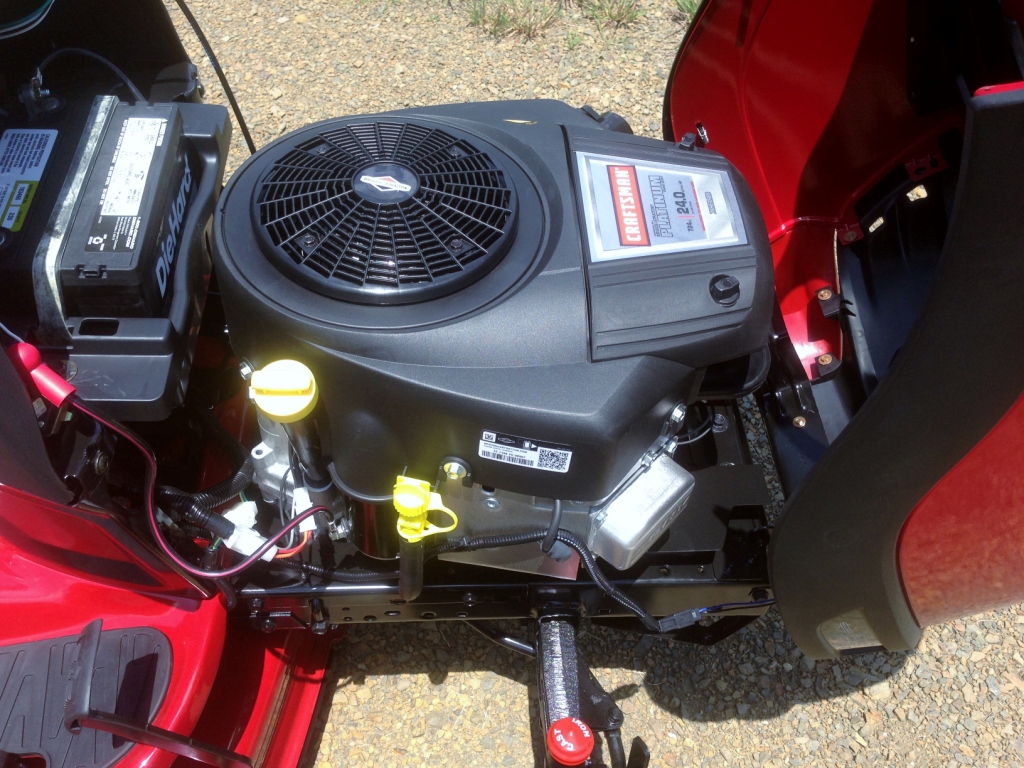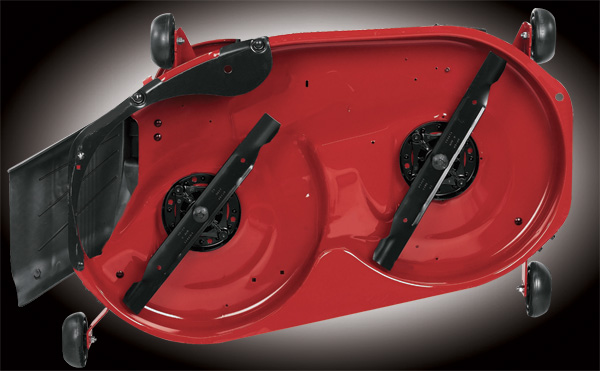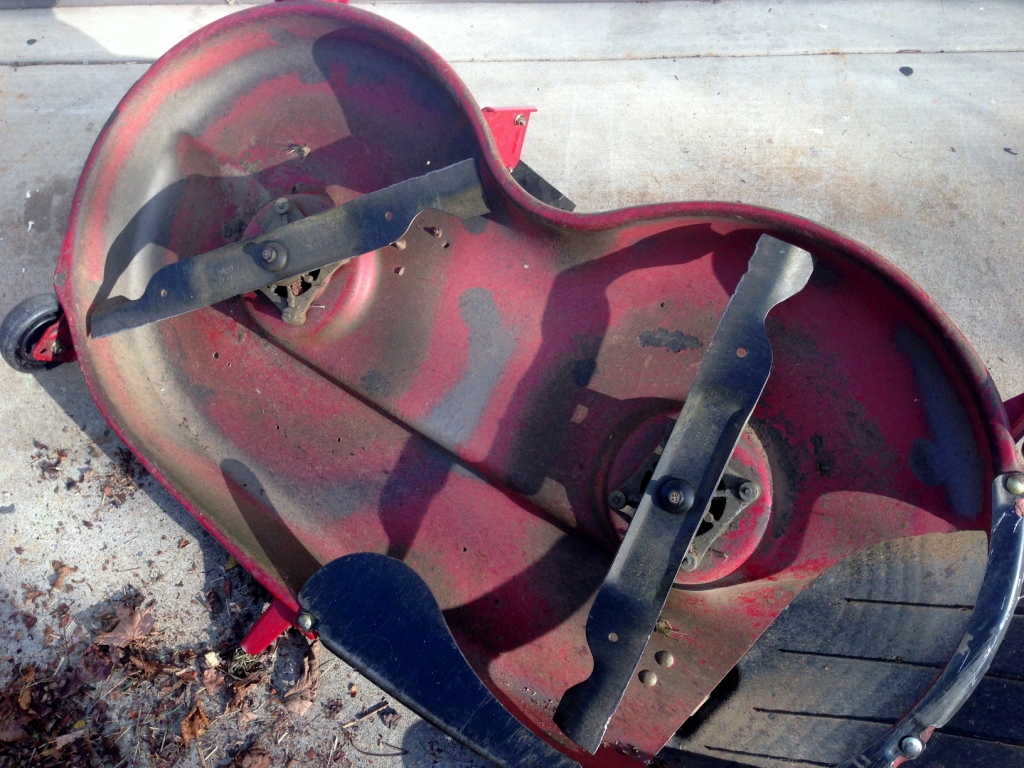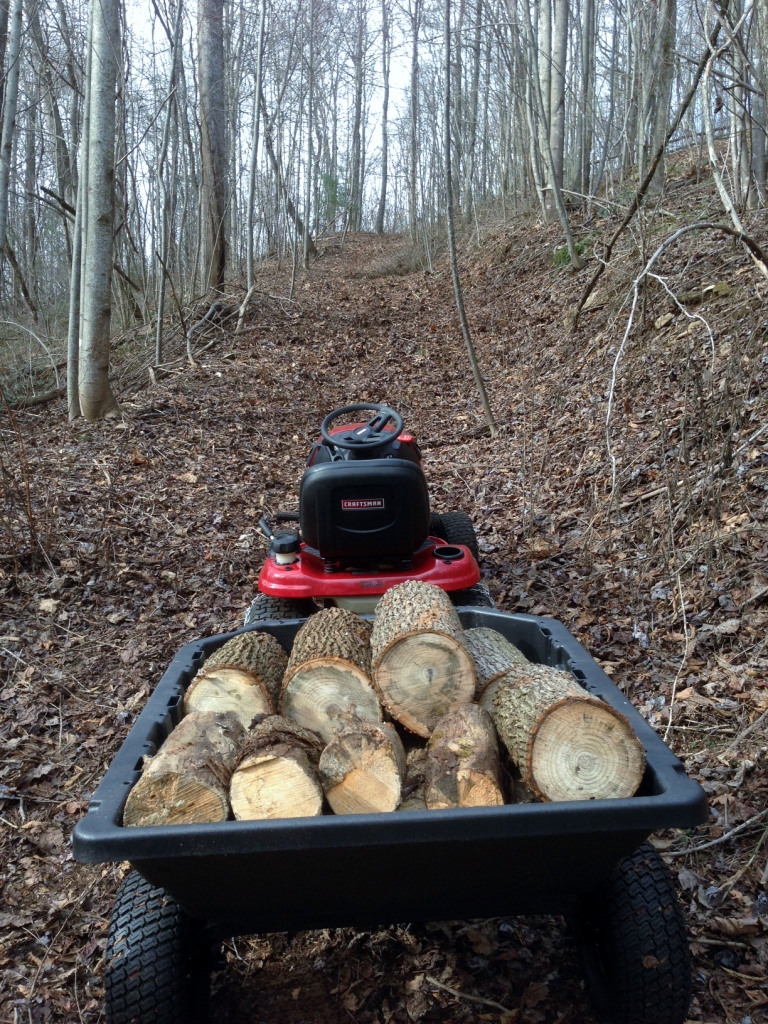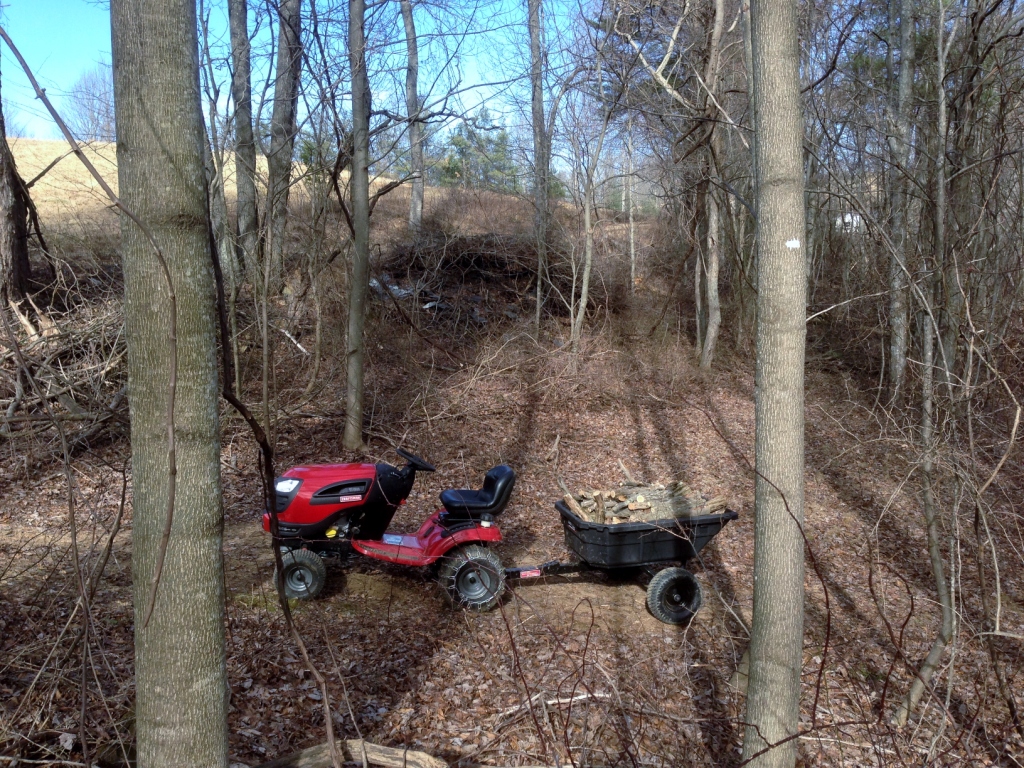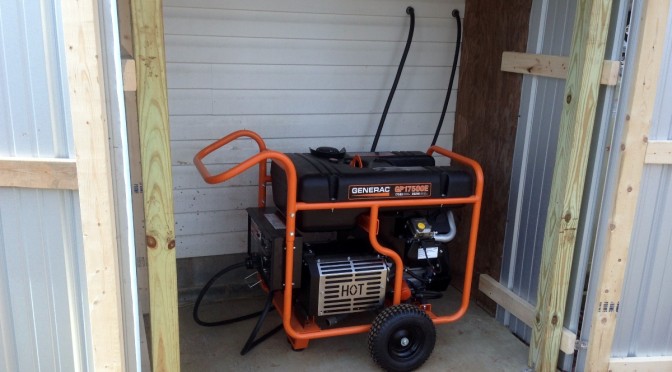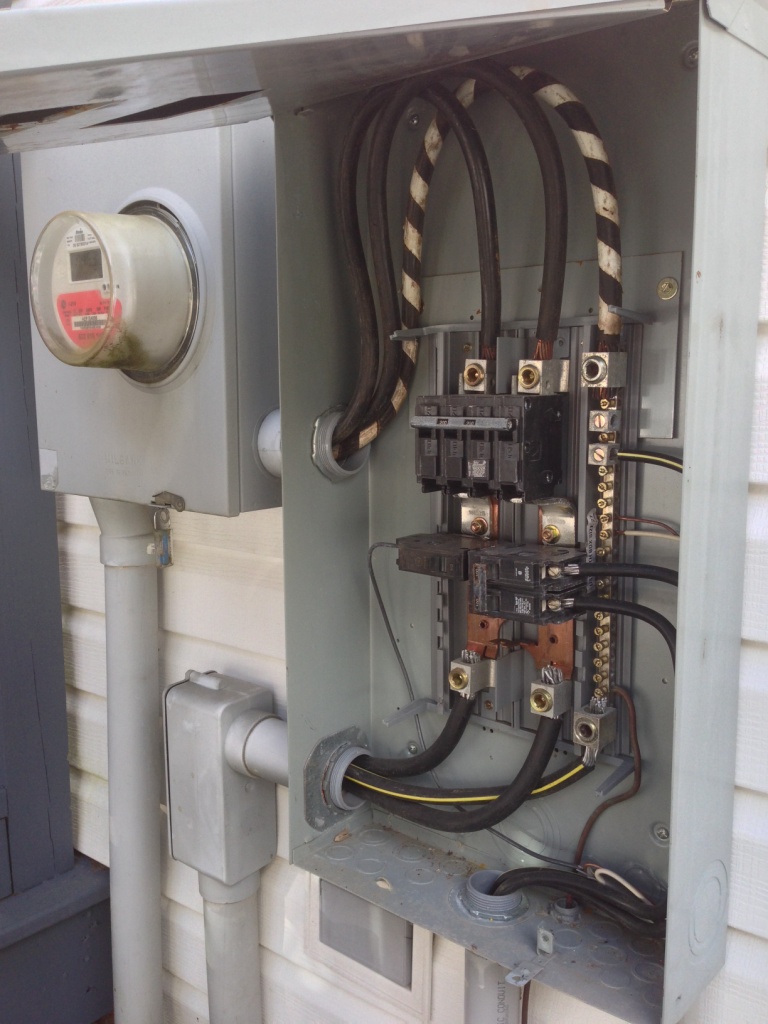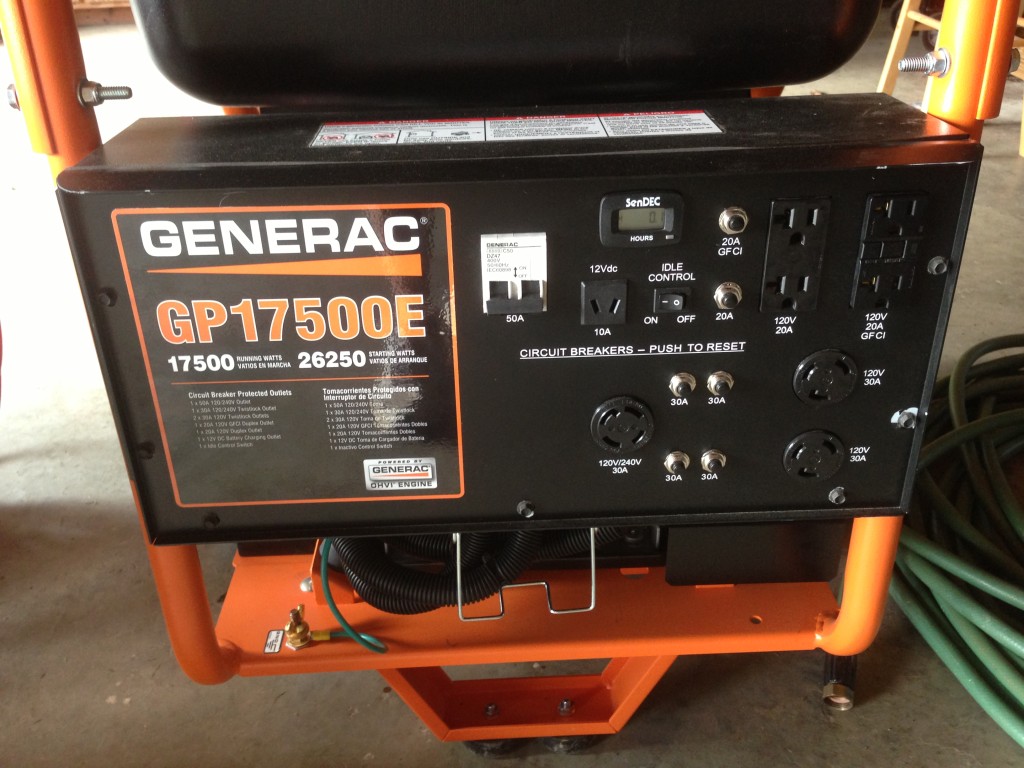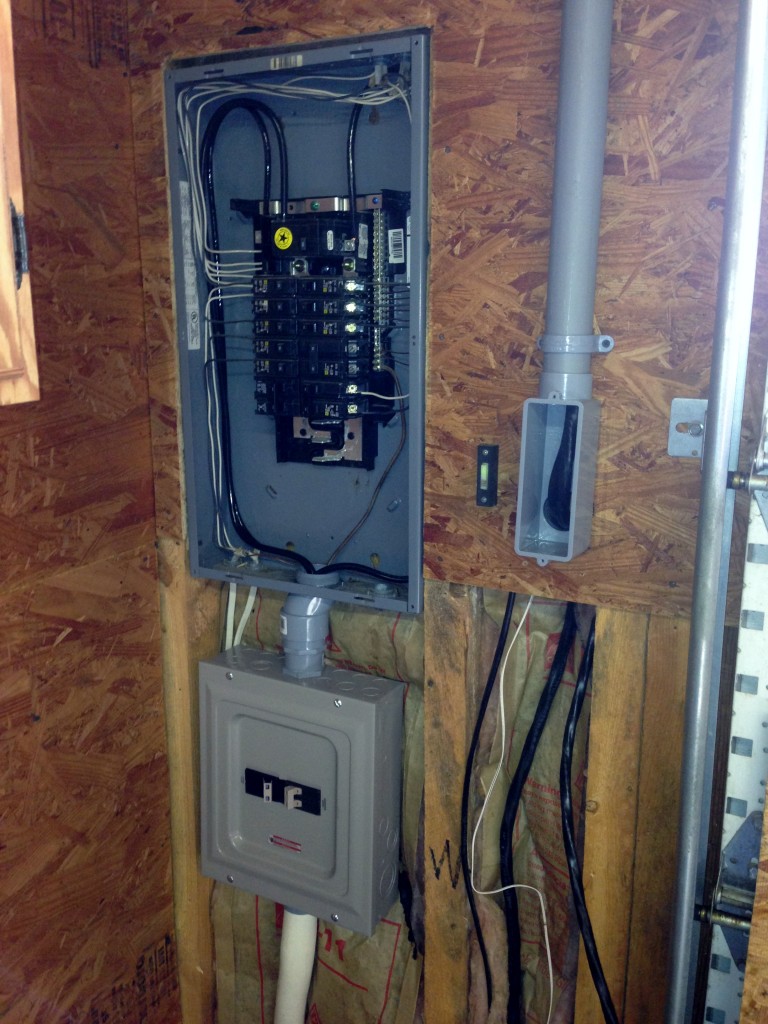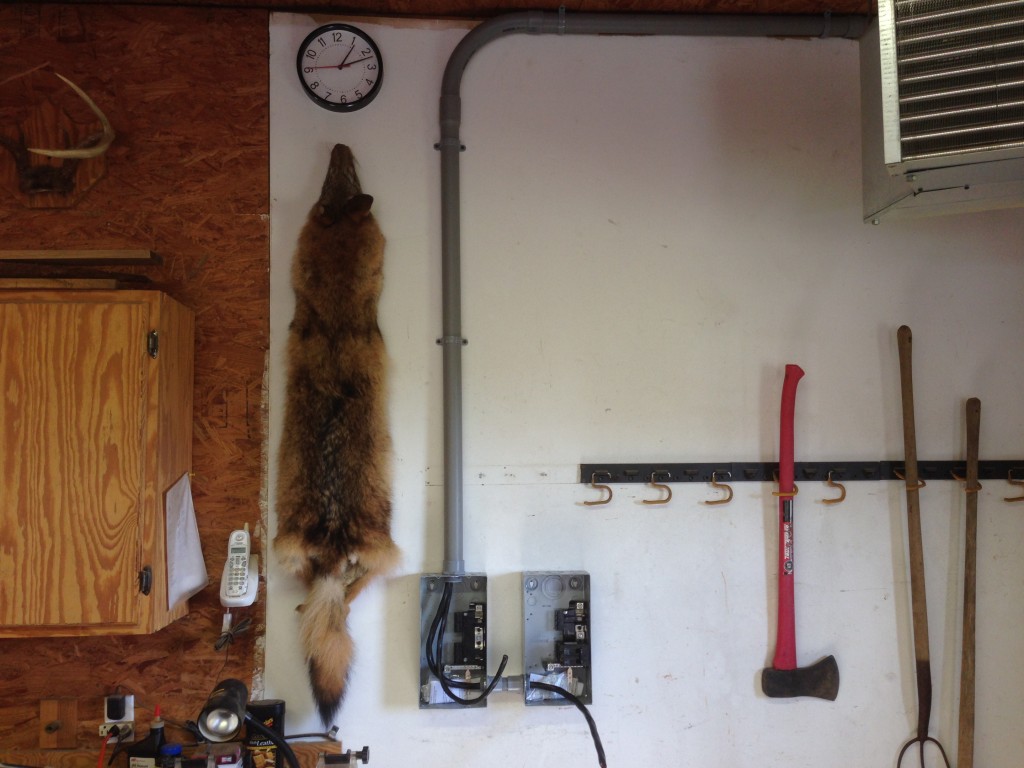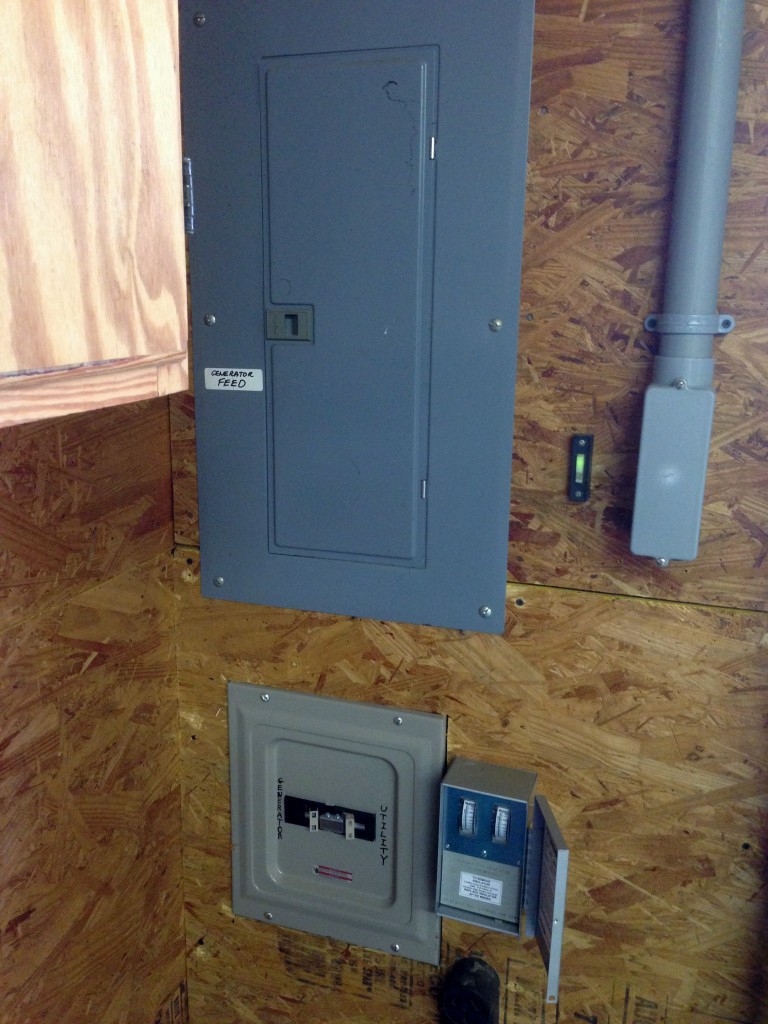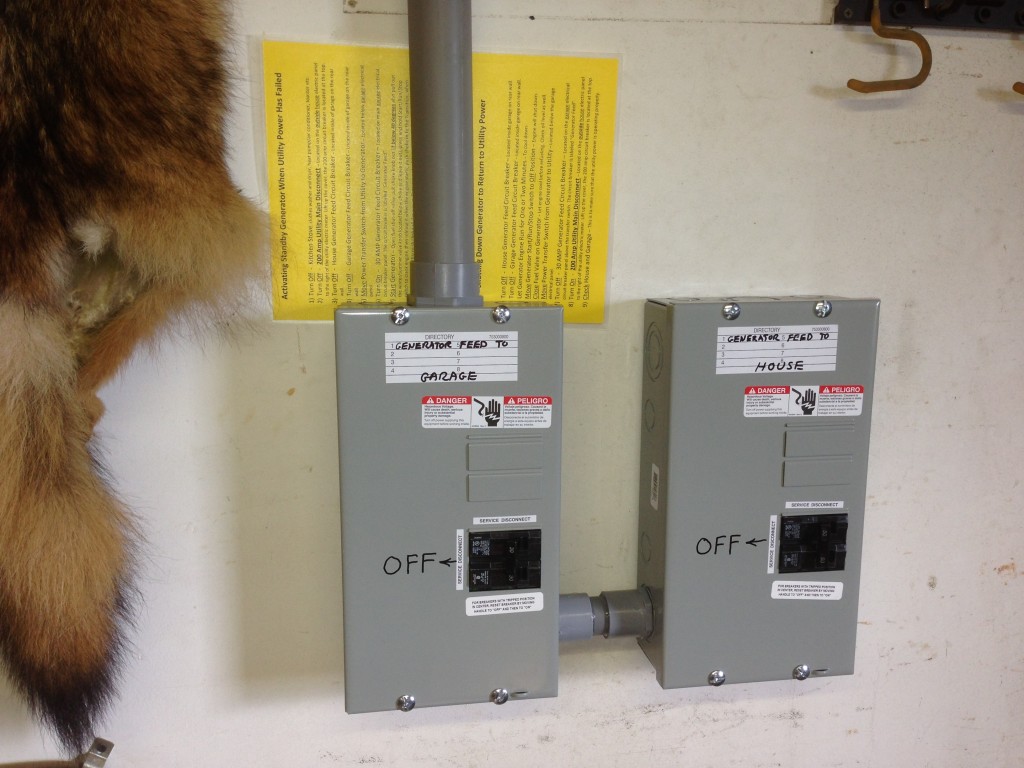The soil up here on top of the mountain is primarily clay with some black dirt here and there. While digging the trench to bury conduit for the standby generator I got a first hand look at what we are up against if we expand our garden beyond its present boundaries. What I found was rocky clay within an inch or two of the surface and it got worse as I went deeper. Ouch!
The previous owner had invested years building up the soil in the garden area with mulch and compost, so within the fenced garden area one finds 5-6 inches of relatively decent loam before hitting the dreaded clay with a side order of rocks. Even so it was amazing how many rocks we pulled out of the garden after turning the soil with the tiller. The garden itself had not been turned in two years so the weeds were in full bloom.
 When considering purchasing a tiller I understood that we would be expanding the garden soon, as well as working the heavy soil in the garden even if we did not expand. So I did not want to purchase a small tiller designed to turn lighter soil down only 4-6 inches. Basically I wanted a large tiller with lots of power that was able to dig down up to 10 inches if desired.
When considering purchasing a tiller I understood that we would be expanding the garden soon, as well as working the heavy soil in the garden even if we did not expand. So I did not want to purchase a small tiller designed to turn lighter soil down only 4-6 inches. Basically I wanted a large tiller with lots of power that was able to dig down up to 10 inches if desired.
What we purchased was the Husqvarna CRT900 14-Inch Briggs & Stratton 900 Series Gas Powered Counter Rotation Rear Tine Tiller.
I guess I'll start with an image of the finished product, meaning the tilled garden (or at least a section of the garden) and work backwards. Some of the issues I have with the machine appear upon reflection to be operator error and some design error. Sorting out what belongs to whom is the purpose of this article. I will say that overall I am pleased with the tiller, though I would not purchase it again if presented with the choice.
 Let me start off with what I like about this machine.
Let me start off with what I like about this machine.
1) The engine is very powerful and regardless of how deep I was tilling, the engine never showed any sign of bogging down as long as I gave it full throttle. Speaking of throttle, all engine controls are found on the engine itself since when tilling you should be controlling the machine with two hands and not messing with the engine speed. There is a choke located above the air cleaner and the engine shut off switch is on the engine. The fuel shut off is located under the fuel tank.
2) This big and heavy machine is self propelled. If it were not it would go nowhere when tilling since the counter rotating tines provide no forward momentum to the machine when working. Having a forward and reverse gear is great, especially when working in tight places. If you examine the image of the tilled garden above you will see that Mrs. Cog has created a pretty garden, which means lots of tight corners and short runs.
3) Heavy duty everything on this machine, including a big heavy counter weight up front. This puts more weight over the wheels and helps keep it balanced when tilling in the dirt.
4) Very thick tiller shroud and shroud flap. On two occasions a large rock got jammed between the tiller tines and the shroud and in both case the machine stopped as expected. Very nice feature. The shroud was not dented or creased in the least. Husky spent some money on this thick steel and it is appreciated. In the image below you can see the shroud flap keeping dirt from flying into my face as I am dragged along tending to the beast.
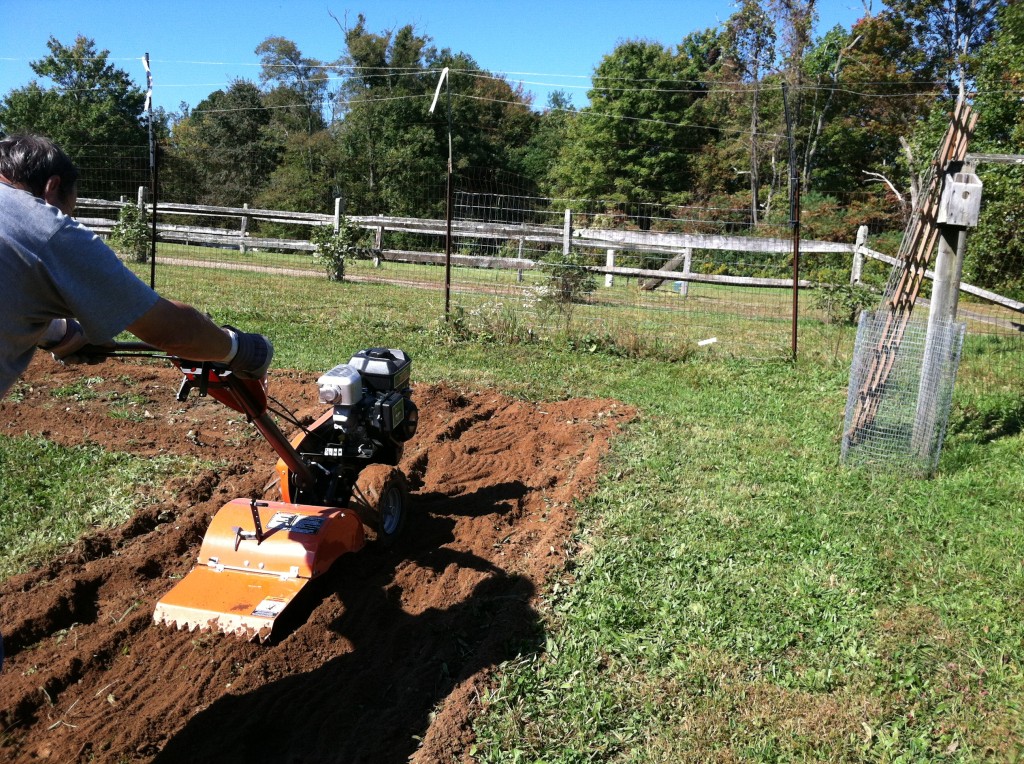 5) Heavy tread on the tires. The soil tends to clump and so the treads do get filled on occasion. But if the tire treads were not as deep as they are they would quickly fill and the result would be slicks. No thank you.
5) Heavy tread on the tires. The soil tends to clump and so the treads do get filled on occasion. But if the tire treads were not as deep as they are they would quickly fill and the result would be slicks. No thank you.
6) Reasonably balanced machine. The counter weight helps forward to back balance and when on level ground the side to side is balanced as well. Note below my problems with side to side balance.
7) The dead man levers are located on both sides, but only one needs to be held in order to keep things running. This is helpful when you loose your balance and don't let go with both hands. The machine continues dragging you forward anyway. Increases productivity that way.
8) The adjustable tine depth adjuster thingy. There are several setting in one inch increments, so for the annal retentive there is just the right depth to be set. This is where I went tragically wrong because being the typical male, since 5 inches is good, 10 inches must be better......right. More about this below.
9) The handle is adjustable up and down...but it takes tools and time to do so. No problem if one person uses the machine most of the time and many other machines don't even offer this feature.
10) The Husky came securely packed on a pallet with wood uprights and cross bracing and with heavy cardboard covering. Assembly basically consisted of attaching the handle and one cable. The biggest issue was getting the wheels out of the pallet spaces. Very pleased with the packing.
Now for the stuff I dislike. As I said above there was/is some operator error here and it will be pointed out where appropriate.
1) The machine is too narrow. Yes, I understand that its width makes it perfect for tilling 4-6 inches deep between rows of crops. And I suspect that if used in this manner the machine is just perfect. But when tilling heavy soil that hasn't been turned lately or ever, the machine tends to tip left and right as the rear tines hit varying degrees of compacted soil.
Operator error alert. I suppose if I took several shallow runs when first turning the soil that this would be less of a problem, if at all. But stupid me....this never occurred to me until the fall tilling when I realized that the soil was easier going this time because it had been tilled in June. So I won't condemn the tiller until I have corrected the operator error.
But ........as soon as one wheel gets a few inches lower than the other in the already tilled soft soil the machine wants to veer off in that direction. This happens often when you are tilling next to a row that has already been tilled. One wheel is on hard pack while the other wallows in the soft dirt. Stay tuned for an update in the spring.
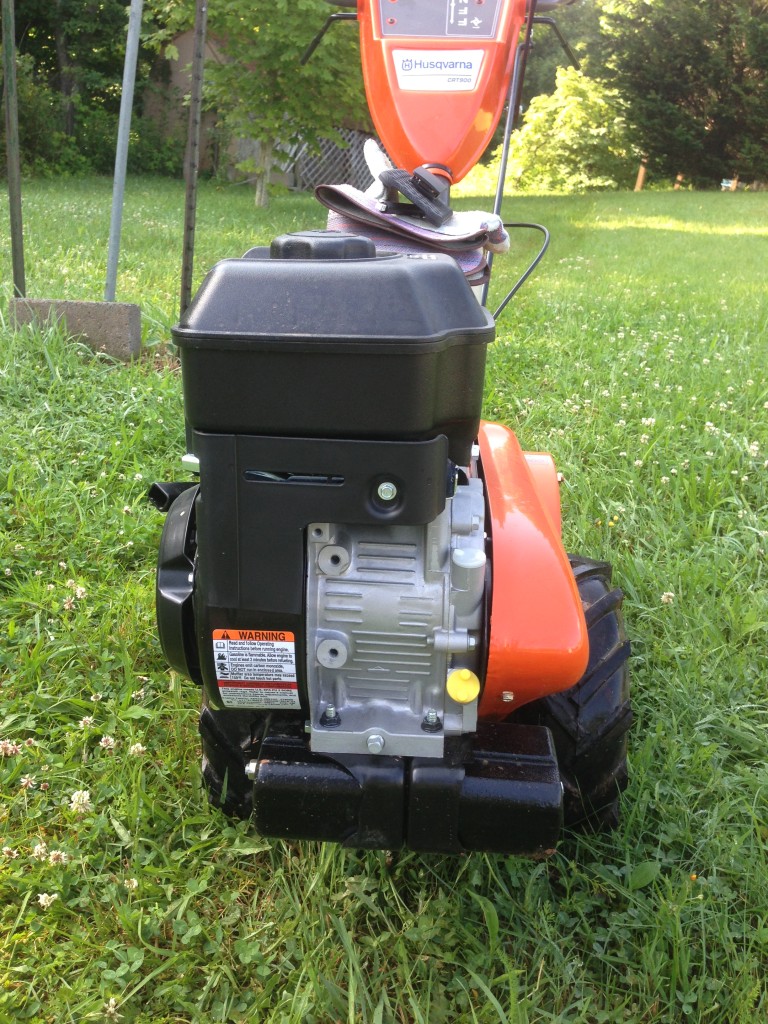 2) While I love the self propelled feature, both forward and backward, the gear shifting mechanism is clunky, the engagement is uncertain and sometime you need to let out the clutch a little when trying to move out of reverse or forward, a dangerous proposition for anyone because the machines tends to jerk and the tines engage if you are moving into forward. Reading some comments left on the Interwebby indicates that this is a design flaw and not particular to my machine. I don't think it is a transmission issue, but rather a clutch problem. This spring I will look for an adjustment.
2) While I love the self propelled feature, both forward and backward, the gear shifting mechanism is clunky, the engagement is uncertain and sometime you need to let out the clutch a little when trying to move out of reverse or forward, a dangerous proposition for anyone because the machines tends to jerk and the tines engage if you are moving into forward. Reading some comments left on the Interwebby indicates that this is a design flaw and not particular to my machine. I don't think it is a transmission issue, but rather a clutch problem. This spring I will look for an adjustment.
3) While I love the powerful engine and the engine controls work fine, I have had problems with the engine running smoothly. I make sure I am using fresh high test gas and I run the engine dry when I am finished. It appears to be a carburetor issue, maybe air/fuel mixture. The odd things is that it is intermittent and thus hard to diagnose. It doesn't make the machine difficult to operate, just irritating.
4) While I love the tine shroud I wish there was some way I could remove it to clean under and around the shroud and tines. This mountain clay/dirt packs hard and it is very time consuming and labor intensive breaking it loose and removing it from all the cracks and crevasses. Maybe I am missing something here and it only takes a few bolts to remove the shroud. I will look closer in the spring and see if I can remove this from the list of issues.
Like I said, some of my issues are with the Husky and some I can see are operator error. I have used powerful tillers before so I do have some experience. But none of them had counter rotating tines which, while without them the machine can beat you to death, it does tend to move the tiller straight ahead. When this Husky starts to tilt left or right it is a damn hard machine to control. Mrs. Cog would not be able to handle this machine.
Let me know your thoughts.
Cognitive Dissonance
